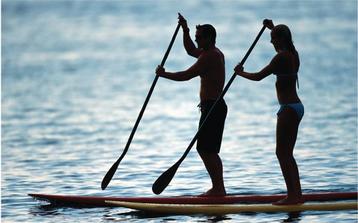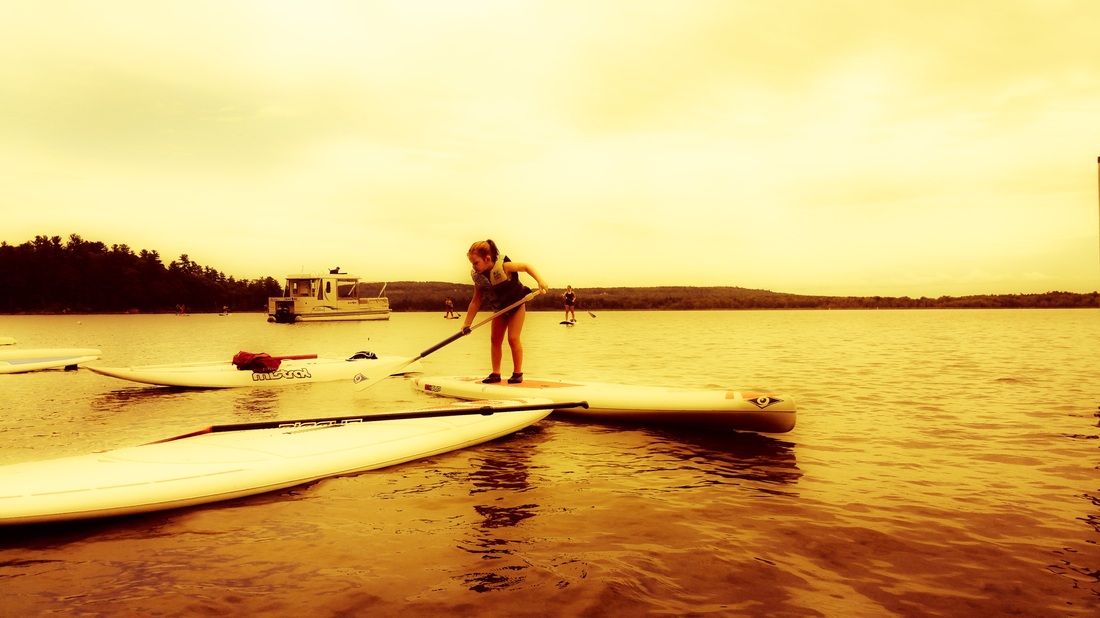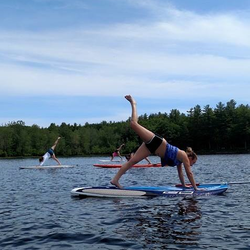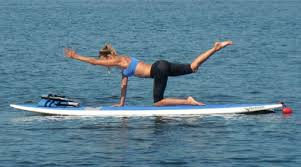Stand up paddle boarding or SUP, is one of the fastest growing outdoor activities on the water. Stand up paddling is easy to learn and can be done on lakes, ponds, rivers, or even in the ocean. SUP boarding is as easy as paddling a canoe but with the additional challenge of standing up. Most are surprised just how easy it is to learn. Typically students are independent in about 15 minutes or less. We have rentals and instruction available upon request. As with Windsurfing and Scuba, we always offer for you to try before you buy.
|
Select a wide 30”+ and stable 11’+ board to start. Always start in calm, flat water.
The board should feel comfortable and not tippy when standing without forward motion. If it still feels too tippy after several attempts to gain your balance, try a larger, wider board. Many people start out on a board much too small, and can never seem to gain balance and become disheartened. Don’t let this be you. Choose the right size board to start out and when in doubt, always go wider and thicker. Follow these helpful tips for holding the paddleAlways grip the paddle with one hand on the top of the paddle and the other on the center of the shaft. Hold the paddle in front of you, with your elbows bent at 90 degrees. This should give you comfortable spacing for paddling. The blade will be angled, and when paddling remember to keep the blade angle facing away from you. Paddles float, so if you fall and must let it go – it won’t sink. |
How to Stand Up on your Paddle Board.
Always start out in calm, flat water and keep in mind you could be falling! So unless you’re in the tropics, a wetsuit may be a good idea.
|
Basic Strokes: Forward Stoke. There are a few basic philosophies on paddle technique, but all revolve around using your paddle as a lever. Your top hand will be driving the lever and the bottom hand will act as the fulcrum point. So with that in mind, we provide the following strokes and tips.
|
Season April 15th - November 15th
Yoga and Stretch
|




